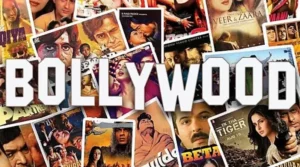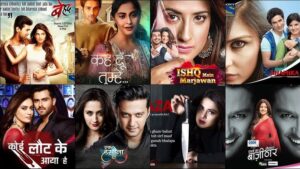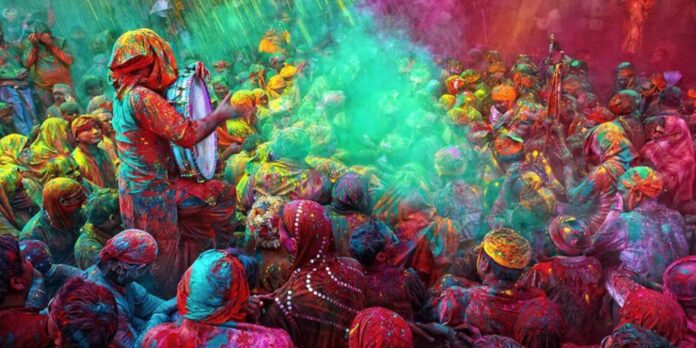Experience the Vibrant Culture and Breathtaking Landscapes of a Cultural Extravaganza: Exploring the Vibrant Cultural Diversity of Handicrafts, Rich Heritage, and Diverse Bazaars
India, a land of diverse cultures, traditions, and languages, boasts one of the most vibrant entertainment industries in the world. From the colorful world of Bollywood to the rich heritage of classical dance and music, India’s entertainment scene offers a captivating mix of modernity and tradition. The country’s entertainment spectrum is vast, encompassing films, television, music, festivals, and emerging digital platforms. Each of these segments reflects India’s dynamic socio-cultural landscape, making it one of the most fascinating entertainment hubs in the world.
Join https://lol-la.com/ as we will take a deep dive into the various forms of entertainment in India, exploring its film industry, the evolution of Indian television, the role of music in Indian culture, and how digital entertainment is reshaping the future of entertainment in the country.
Exploring the Vibrant Culture in India: The Cinematic World of Bollywood and Regional Cinema
 Bollywood: The Heartbeat of Indian Entertainment
Bollywood: The Heartbeat of Indian Entertainment
Bollywood, the Hindi-language film industry based in Mumbai, is the largest and most influential film industry in India. Known for its grand productions, elaborate dance sequences, and emotionally charged storylines, Bollywood has captured the hearts of millions not only in India but across the globe. Films like Sholay, Dilwale Dulhania Le Jayenge, Lagaan, and 3 Idiots have left a lasting legacy in Indian cinema, showcasing the talent and creativity of Indian filmmakers.
Bollywood films often focus on universal themes such as love, family, and societal struggles, making them relatable to a broad audience. The music and dance numbers are integral to the storytelling, with playback singers and choreographers playing as significant a role as the actors themselves.
Bollywood stars, such as Amitabh Bachchan, Shah Rukh Khan, Deepika Padukone, and Priyanka Chopra, are household names and enjoy global recognition. These actors have not only made their mark in India but also in Hollywood and other international industries, further expanding Bollywood’s influence.
Regional Cinema: Diversity in Storytelling
While Bollywood might be the most well-known, India’s regional cinema is equally diverse and influential. Each state in India has its own language and cultural traditions, and regional films reflect these differences. Tamil cinema (Kollywood), Telugu cinema (Tollywood), Malayalam cinema, and Bengali cinema have carved out their own spaces within the Indian film industry.
Tamil and Telugu films are known for their larger-than-life productions and action-packed sequences, with stars like Rajinikanth, Mahesh Babu, and Allu Arjun commanding massive fan followings. Malayalam cinema is praised for its realistic portrayals and thoughtful narratives, while Bengali cinema has a rich history of producing critically acclaimed, artistic films, with renowned directors such as Satyajit Ray and Ritwik Ghatak leading the way.
These regional industries contribute significantly to India’s entertainment landscape, and their growing influence has expanded beyond India to international platforms like Netflix and Amazon Prime Video.
The Evolution of Indian Television: Recommended from Medium
From Doordarshan to Satellite Channels
Indian television has come a long way since its inception. In the 1980s, Doordarshan, India’s public broadcaster, dominated the small screen with iconic shows like Ramayan, Mahabharat, Hum Log, and Buniyaad. These shows were a reflection of Indian society, traditions, and values, and they captivated audiences across the country.
The 1990s saw the arrival of cable and satellite TV, which revolutionized the entertainment landscape. Channels like Zee TV, Star Plus, and Sony Entertainment Television introduced a variety of shows that catered to a more urban, diverse audience. The introduction of daily soaps, reality TV, and talent shows changed the way Indians consumed television content.
The Popularity of Soap Operas and Reality TV
Indian soap operas, or serials, have long been a staple of Indian television. Shows like Kyunki Saas Bhi Kabhi Bahu Thi, Kasautii Zindagii Kay, and Balika Vadhu became cultural phenomena, running for years and attracting millions of viewers. These shows, often revolving around family drama, relationships, and societal issues, have played a significant role in shaping Indian popular culture.
 Reality TV, too, has found a huge audience in India. Shows like Kaun Banega Crorepati, Bigg Boss, and Indian Idol have become household names, offering a mix of competition, drama, and entertainment. These programs provide a platform for ordinary people to showcase their talent and achieve fame, further fueling the aspirational dreams of millions of Indians.
Reality TV, too, has found a huge audience in India. Shows like Kaun Banega Crorepati, Bigg Boss, and Indian Idol have become household names, offering a mix of competition, drama, and entertainment. These programs provide a platform for ordinary people to showcase their talent and achieve fame, further fueling the aspirational dreams of millions of Indians.
The Role of Music in Indian Rich Cultural Heritage
Bollywood Music: A National Obsession
Music is an integral part of Indian culture, and Bollywood music is the most popular genre in the country. Bollywood soundtracks are often more famous than the films themselves, and playback singers like Lata Mangeshkar, Kishore Kumar, Asha Bhosle, and Arijit Singh are revered across generations. The songs range from romantic ballads to foot-tapping dance numbers, reflecting the emotional highs and lows of the films they accompany.
The influence of Bollywood music extends beyond the silver screen. Weddings, festivals, and parties in India are incomplete without Bollywood songs, and dance performances at events often involve choreographed routines to popular Bollywood tracks.
Classical and Folk Music: Preserving Rich Heritage and Tradition
While Bollywood music dominates the mainstream, India has a rich tradition of classical and folk music that continues to thrive. Hindustani classical music from North India and Carnatic classical music from South India have a devoted following, with legendary maestros like Ravi Shankar, Zakir Hussain, and L. Subramaniam keeping the tradition alive.
Folk music is another important aspect of Indian culture, with each region of the country boasting its unique style. From the Bhangra of Punjab to the Garba of Gujarat and the Baul songs of Bengal, folk music reflects the diverse cultural landscape of India and plays a crucial role in festivals and celebrations.
Unforgettable Cultural Celebrations and Festivals in India
Bollywood-Style Events
Indian festivals are famous for their grandeur, color, and enthusiasm. From the lively Holi celebrations to the illuminated Diwali festivities, Bollywood has popularized these festivals through cinematic depictions. Films often showcase these events with elaborately choreographed songs and dances, making them synonymous with Bollywood glamour.
Music festivals have also grown in popularity across India, with events like the Sunburn Festival in Goa and the NH7 Weekender bringing international DJs and musicians to Indian shores. These festivals attract a young, urban audience, blending global music trends with Indian sensibilities.
Traditional Performing Arts
India’s traditional performing arts are an integral part of its cultural heritage. Classical dance forms like Bharatanatyam, Kathak, Odissi, and Kathakali are still performed today, both on domestic stages and in international cultural festivals. These dances tell stories through intricate movements, expressions, and costumes, often rooted in ancient mythology and religious themes.
In addition to classical dance, India’s theater scene remains vibrant, with folk dramas like Jatra in West Bengal and Yakshagana in Karnataka maintaining a devoted audience. Contemporary theater, too, has gained momentum, with experimental plays in both Hindi and English drawing audiences in urban centers.
Digital Entertainment: A New Frontier
The Rise of OTT Platforms
In recent years, the Indian entertainment industry has witnessed a digital revolution with the rise of OTT (over-the-top) platforms like Netflix, Amazon Prime Video, and Disney+ Hotstar. These platforms offer a vast array of content, from original web series to international shows and films, catering to a tech-savvy audience.
OTT platforms have allowed for the emergence of new storytelling formats, with shows like Sacred Games, Mirzapur, and Paatal Lok garnering critical acclaim and massive viewership. These platforms have also given regional filmmakers a platform to reach a global audience, with films and series in Tamil, Telugu, Malayalam, and Bengali gaining traction.
Social Media and Influencers in Entertainment
The rise of social media platforms like Instagram, TikTok (now banned in India), and YouTube has created a new breed of digital entertainers. Influencers and content creators have amassed millions of followers, becoming celebrities in their own right. From comedy sketches and dance videos to beauty tutorials and travel vlogs, these digital stars are reshaping the entertainment landscape in India.
The accessibility of smartphones and affordable internet data has democratized content creation, allowing people from all corners of India to participate in the entertainment industry. This shift has made the Indian entertainment landscape more inclusive and diverse, with voices from all strata of society contributing to the cultural dialogue.
Conclusion
India’s entertainment landscape is a rich tapestry of traditions, modernity, and innovation. From the glittering world of Bollywood to the diverse regional cinemas, from classical dance performances to cutting-edge digital content, India’s entertainment industry continues to evolve and expand. As the country embraces new technologies and platforms, the future of Indian entertainment looks brighter than ever.
Whether it’s through films, television, music, or digital media, entertainment in India is not just about escapism—it is a reflection of the country’s soul, a celebration of its diversity, and a testament to its enduring cultural legacy. For both Indians and global audiences, India’s entertainment scene offers an endless source of fascination, joy, and inspiration.
Also Read: Unveiling India’s Vibrant Nightlife Scenes: Trendy Music & Culture in Mumbai and Delhi





